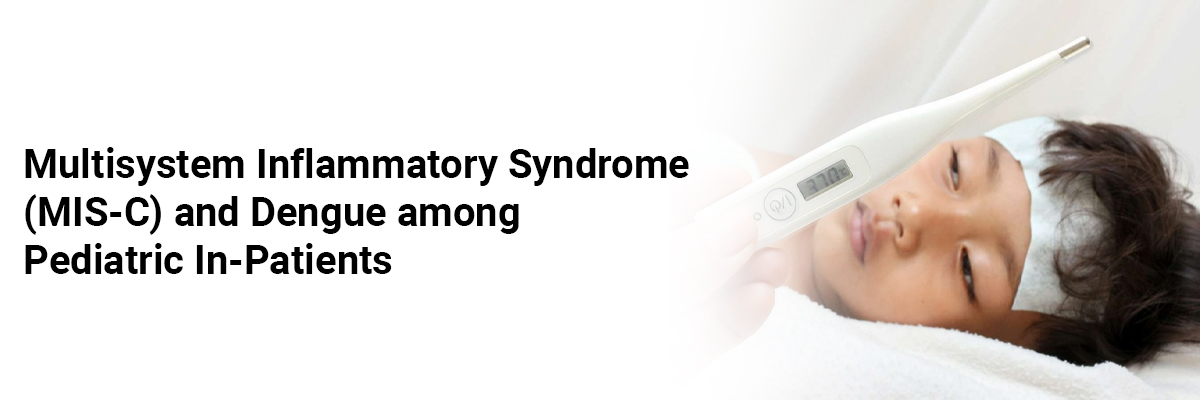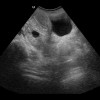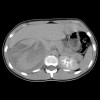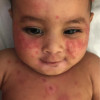
 IJCP Editorial Team
IJCP Editorial Team
Multisystem Inflammatory Syndrome in Neonates
A report describes a case of a 32-week (gestational age) female newborn weighing 1,700g who was delivered by an emergency cesarean section, following placental abruption, to an un-booked 30-year-old primigravida mother. Immediately after birth, the baby was separated from her mother due to her mild respiratory symptoms.
At delivery, the baby needed positive pressure ventilation (PPV) for 2 min because of grunting and then received nasal CPAP. Her Apgar scores were 7 and 8 at 1 and 5 min, respectively. The baby was transferred in a closed incubator to an isolation room since her mother's COVID-19 PCR swab result was pending. Shortly after birth, the baby grew respiratory distress with an increased oxygen requirement (FiO2 of 35%) and required non-invasive mechanical ventilation (NIMV). She also received ampicillin and gentamicin for ten days despite negative cultures due to elevation in inflammatory markers (Procalcitonin = 0.19 ng/mL). 10 h after delivery, the mother's swab result was positive for SARS-CoV-2. The baby was then screened by (RT-PCR), which returned positive at 24 h of life. The chest radiograph showed a bilateral ground glass appearance with bilateral haziness and good lung volume, so she received treatment as a case of respiratory distress syndrome (RDS) with possible COVID-19 infection.
Baby's initial CBC (on the 1st day of life) was within normal limits, but she developed leukocytopenia, lymphocytopenia, and normal Hb and platelet counts later (on the 3rd day of life). She showed elevated liver enzymes with high D-dimer, elevated inflammatory markers (serum ferritin and procalcitonin) levels, and low serum albumin concentration. Her elevated troponin and markedly elevated BNP indicated myocarditis. On the 4th day of life, her echocardiography was normal. She received the diagnosis of multi-system inflammatory syndrome in children (MIS-C) and received two doses of IVIG (1g/kg/day) and intravenous hydrocortisone (0.5mg/kg every 12 h for seven days). Her Hydrocortisone treatment was discontinued without tapering as she developed easy bruising.
On the 5th day of life, she showed markedly lowered WBC, lymphocytes, platelet counts, and hemoglobin concentration, prompting repeated PRBCs transfusions. On the 10th day of life, she was shifted to a nasal cannula, and three days later, she showed SpO2 within normal limits without any support. On the 11th day of life, her laboratory investigations improved. Her troponin level was reduced almost by 50%, but the BNP level remained high.
Her PCR test done on day 29 of life was negative.
Macroscopically, the placenta showed a singleton placental disc with complete cotyledons and a normal vascular distribution. The fetal membranes were translucent. The umbilical cord was short (around 17 cm) and trivascular. Microscopically, the chorionic villi revealed areas of delayed villous maturation and focal chorangiosis. No features of maternal vascular malperfusion or inflammation were present.
On the 3rd day post-delivery, the mother was symptom-free and thus discharged home. At the age of 30 days, the infant's weight reached 2,000 g, and thus was discharged home. Notably, she did not receive her own mother's milk throughout hospitalization.
Shaiba LA, Hadid A, Altirkawi KA. Case Report: Neonatal Multi-System Inflammatory Syndrome Associated With SARS-CoV-2 Exposure in Two Cases From Saudi Arabia. Front. Pediatr. 2021. https://doi.org/10.3389/fped.2021.652857

IJCP Editorial Team
Comprising seasoned professionals and experts from the medical field, the IJCP editorial team is dedicated to delivering timely and accurate content and thriving to provide attention-grabbing information for the readers. What sets them apart are their diverse expertise, spanning academia, research, and clinical practice, and their dedication to upholding the highest standards of quality and integrity. With a wealth of experience and a commitment to excellence, the IJCP editorial team strives to provide valuable perspectives, the latest trends, and in-depth analyses across various medical domains, all in a way that keeps you interested and engaged.




















Please login to comment on this article